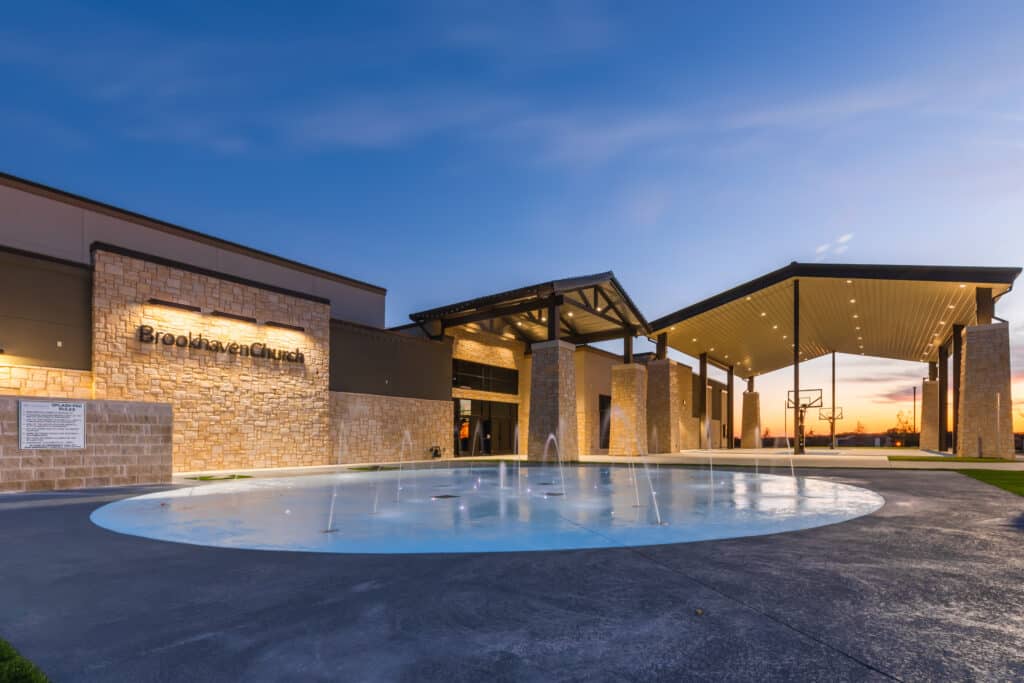The process of building a church requires many decisions and considerations, not the least of which is how to make the project sustainable in the long run. Sustainability and energy efficiency in church buildings begins at the earliest stages of construction, and it is important for congregations and building committees to make them a priority.
When building a new church or ministry project, Christians have a responsibility to exercise good stewardship over the resources involved. There is a God-given responsibility to take care of the earth, reducing pollution, protecting ecosystems, and conserving resources for future generations. Prioritizing energy efficiency in church buildings also has the added benefit of reducing long-term maintenance & operation expenses.

LEED Certification
LEED certification is a recognition of sustainability achievement in construction. Globally-recognized, the program awards points based on a project’s actions to address energy, carbon, water, materials, health, transportation, waste, and indoor environmental quality. Projects are verified individually, and corresponding merit awards are given for all aspects of the project: design, construction, maintenance, and operation.
Unfortunately, enrolling in the LEED program can be cost-prohibitive for many non-profits, despite its benefits for monitoring how owners and operators use resources efficiently. However, even without the resources to attain LEED certification, ministries and non-profits have quite a few strategies at their disposal to reduce life cycle costs and lower their impact on the environment.
Off to a Good Start: Emphasizing Energy Efficiency in Church Buildings From the Beginning
Sustainability and energy efficiency in church buildings begins with the way a church or other ministry building is built. With a plan that emphasizes energy efficiency and sustainable practices, building committees can optimize their resources and set themselves up for success moving forward. Good foresight can help ministries make sustainable design decisions to benefit the environment and facilitate favorable economic return.

Building Materials
Addressing energy efficiency in church buildings begins with the most fundamental building blocks of the project. The materials used in your construction can set your building up for sustainability success right off the bat. Here are just a few suggestions:
- Flooring or wall materials made from recycled or recyclable materials
- Energy-efficient insulation
- Low-E glass windows that reflect heat
- Light-colored (and thus highly-reflective) roofing materials
- Low-maintenance roofing and flooring
By using the right materials, you can make energy efficiency easier to accomplish with minimal trouble.
Innovative Products
In a similar vein to the right materials, you can help your construction project naturally tend toward efficiency by installing appliances that are designed to be sustainable. Innovative products can also extend the life of your building and facilitate ongoing savings. As you build, look for faucets, toilets, refrigerators, and HVAC systems that will make your building more efficient.
Low-flow toilets can reduce water usage up to 60%, and you can experience tremendous savings by considering carefully the kind of unit that will manage the building’s heating and air conditioning. Most modern appliances are geared toward saving energy, water, and money, meaning that they yield the lowest long-term life-cycle costs. Sometimes they also present the best savings at the onset.

Building Techniques
Heat transfer through walls, windows, and roofs is one of the most important considerations for achieving energy efficiency in church buildings. Warmth can be lost to a colder exterior if insulation practices are not up to snuff, and in the summer solar radiation goes head-to-head with a building’s air conditioner, fighting for dominance.
Much can be done to aid in a building’s thermal regulation even before ground is broken. It begins with building orientation and envelope. In order to build sustainably, building committees should identify the best orientation on the site for their building. This involves mapping out the progress of the sun and determining the best location for optimizing sun exposure, taking both summer and winter into account relative to the climate of your location.
A building’s envelope describes the primary thermal barrier between interior and exterior environments. It includes the foundation, walls, roof, and windows. An efficient building envelope will reduce excessive heat transfer, avoiding west-facing glass as possible and placing windows, doors, and skylights strategically.
Wise orientation and envelope decisions made in the design process can dramatically reduce solar heat load in practice. This will put less strain on HVAC systems when they are installed, extending their longevity and increasing their profitability and efficiency.
Sustainable Building with Building God’s Way
At Building God’s Way, we have a kingdom-minded approach to sustainability on ministry-based building projects called Green Stewardship. It emphasizes attainable sustainability strategies for ministries to incorporate into their building projects. In doing so, you can glorify God through careful stewardship of what He has given us to protect.
Leave a Reply